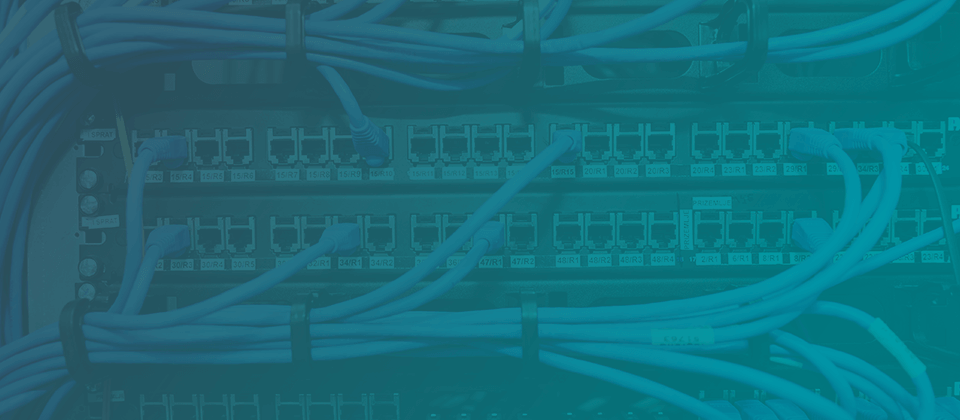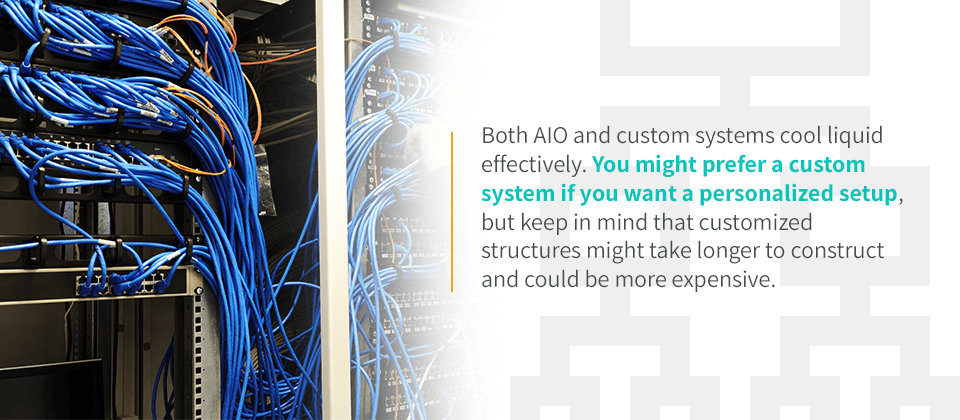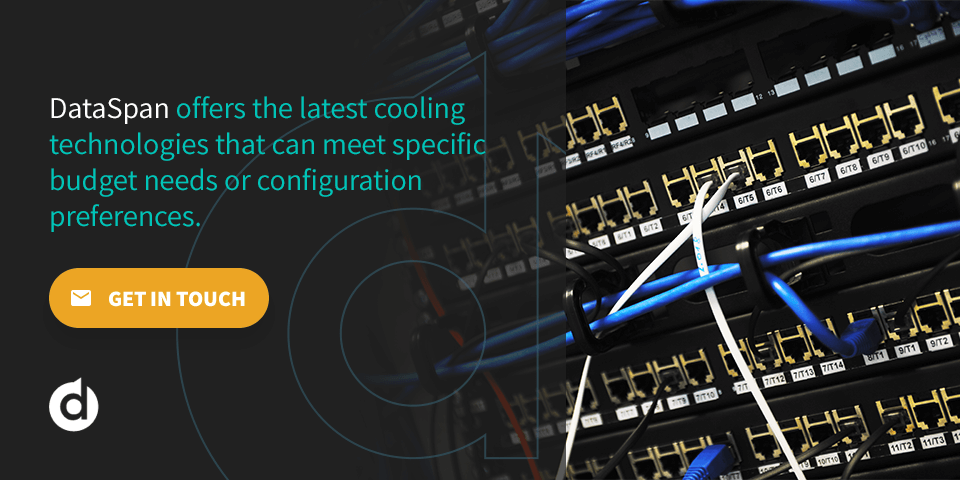A Guide to Data Center Liquid Cooling

Data centers house crucial technology. While these environments protect equipment, they also face significant challenges. Data center equipment constantly generates heat, which can impair functioning if not controlled properly. Excess heat can cause servers to shut down or shorten their entire life spans.
Cooling solutions combat heat build-up, allowing data centers to function properly. One option is liquid cooling — data center liquid cooling is a new method that prevents equipment CPUs from overheating. Learn more about liquid cooling and how DataSpan can help your center find the best cooling solution.
How Is Liquid Cooling Used in Data Centers?
Liquid cooling technologies help data center equipment remain at safe temperatures. This method is cost-effective and versatile, making it a popular choice for various data center sizes. Its energy-efficient nature also helps your center meet environmental standards.
During cooling, liquid technology uses coolants to transfer heat away from the equipment. It follows these basic steps:
- The coolant absorbs heat: Liquid cooling systems connect central processing units (CPUs) with baseplates. The baseplates have a metal surface that is filled with coolant. The heat generated by the equipment moves to the CPU-baseplate connection. The coolant within the baseplate absorbs the heat, preventing it from getting warmer.
- The heat moves into a radiator: The baseplate transfers the heat through the liquid cooling system. It travels through a tube and into a radiator.
- The radiator exposes the liquid to the air: Once the liquid reaches the radiator, the system turns it toward the air. This step allows the liquid to cool off. The radiators contain fans that also assist with the cooling process.
- The liquid returns to the system: After it’s cooled, the system fans reroute the liquid to the baseplate and water block. As the equipment heats up, the cycle begins again.
Liquid Cooling Options for Data Centers
Data center managers can choose various configurations for liquid cooling. There are two major types of liquid cooling solutions:
- All-in-one (AIO) systems: AIO systems arrive in a standard composition with all the necessary components and capabilities to cool technology. You don’t have to install additional pieces and have limited options for customization. AIO systems follow the basic liquid cooling steps, from the coolant absorbing heat to the circulation into the radiator.
- Custom cooling loops: These systems require you to acquire and install each system component yourself. You take parts like a water block, coolant reservoir, radiator, fans and tubes and create a customized configuration. The equipment servers are separate from the other pieces. Tubes connect the radiator to the servers, and they transfer hot liquid away from the equipment. Once the liquid cools, the tubes transfer it back into the system to continue the cycle.
Both AIO and custom systems cool liquid effectively. You might prefer a custom system if you want a personalized setup, but keep in mind that customized structures might take longer to construct and could be more expensive. A cooling technician can help you design a system that meets your needs and budget.

Advantages of Liquid Cooling
Liquid cooling is a popular option for many data centers. The method has benefits like:
- Advanced technology capabilities: As technology advances, CPU speeds and capacities increase significantly. Liquid cooling technologies create a direct connection between the CPU and the coolant, allowing them to decrease heat most effectively. You can use data center equipment to the maximum, trusting that liquid cooling will meet the challenges.
- Quiet operation: Despite liquid cooling’s powerful approach, it works quietly. The radiator fans have strong insulation, helping them emit minimal noise while turning. This structure helps you maintain a calm environment. Quiet is important for many data center operators — loud operating noises can harm efficiency and create a stressful environment.
- Pleasing appearance: Liquid cooling can also assist with your data center’s visuals. Some feature LED screens or other eye-catching components that uplift your center instead of appearing bulky.
Liquid Cooling vs. Air Cooling in Data Centers
Another data center cooling option is air cooling. Air cooling also transfers heat away from the equipment, but it uses heat pipes instead. Air coolers also contain baseplates made of copper or aluminum, and thermal energy moves from the baseplate to the heat pipes. These pipes transfer the heat into a nearby heatsink, which absorbs the heat from the metal. Air cooling needs strong construction materials and high fan quality to work correctly.
Both liquid cooling and air cooling are viable options for data centers. They contain a few key differences that can help you decide between them:
- Price: Both air and liquid cooling systems have broad price variations. Air cooling systems are often less expensive because of their straightforward structure. While customized liquid cooling options are excellent for meeting specific needs, they can also be more expensive. Exact costs depend on the equipment size and functionality, so your total price depends on your preferences.
- Size: Air coolers are typically bigger than liquid coolers. Liquid coolers need sufficient space for radiators and tubes, but the overall systems are generally smaller than air coolers. Depending on your data center, size might be a significant concern. Tinier centers often need smaller pieces to optimize the available space.
- Sound: Liquid cooling centers are known for their quiet nature, while air cooling systems are louder. Air cooling heatsinks and fans can emit significant noises while in use. However, you can often find noise-reducing options that decrease loudness.
Overall, choosing between liquid and air cooling depends on your center’s priorities. If you want a quiet option that takes up minimal space, liquid cooling can better meet these needs. You might also want a customized configuration, making liquid options more appealing.
Your data center has many options. Various liquid and air systems are available, allowing you to find the equipment that matches your budget and preferences. You can also work with data center cooling professionals to narrow down your options and schedule an installation.
Choose DataSpan for Your Data Center Cooling Center Solutions
Liquid cooling helps data centers function at their best efficiency. If you’re seeking cooling solutions, choose DataSpan. We’ve helped data centers run efficiently for almost 50 years, building the expertise to help you optimize operations.
We offer the latest cooling technologies that can meet specific budget needs or configuration preferences. You can improve system uptime, reduce energy costs and maintain the optimal environment for your data equipment. Our non-disruptive approach allows you to continue operations while we install your transformative solution.
To learn more about our data cooling options, contact DataSpan today.








